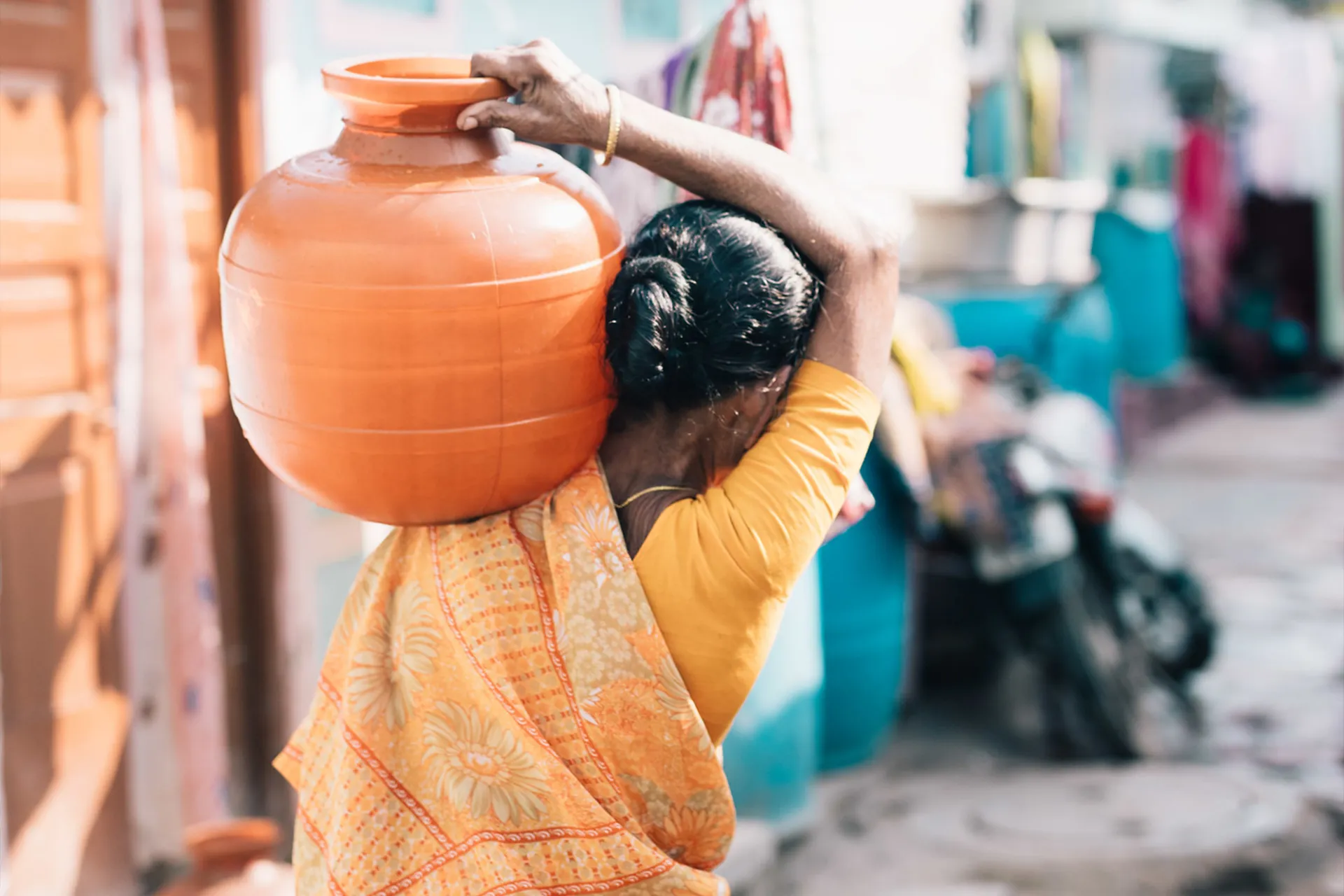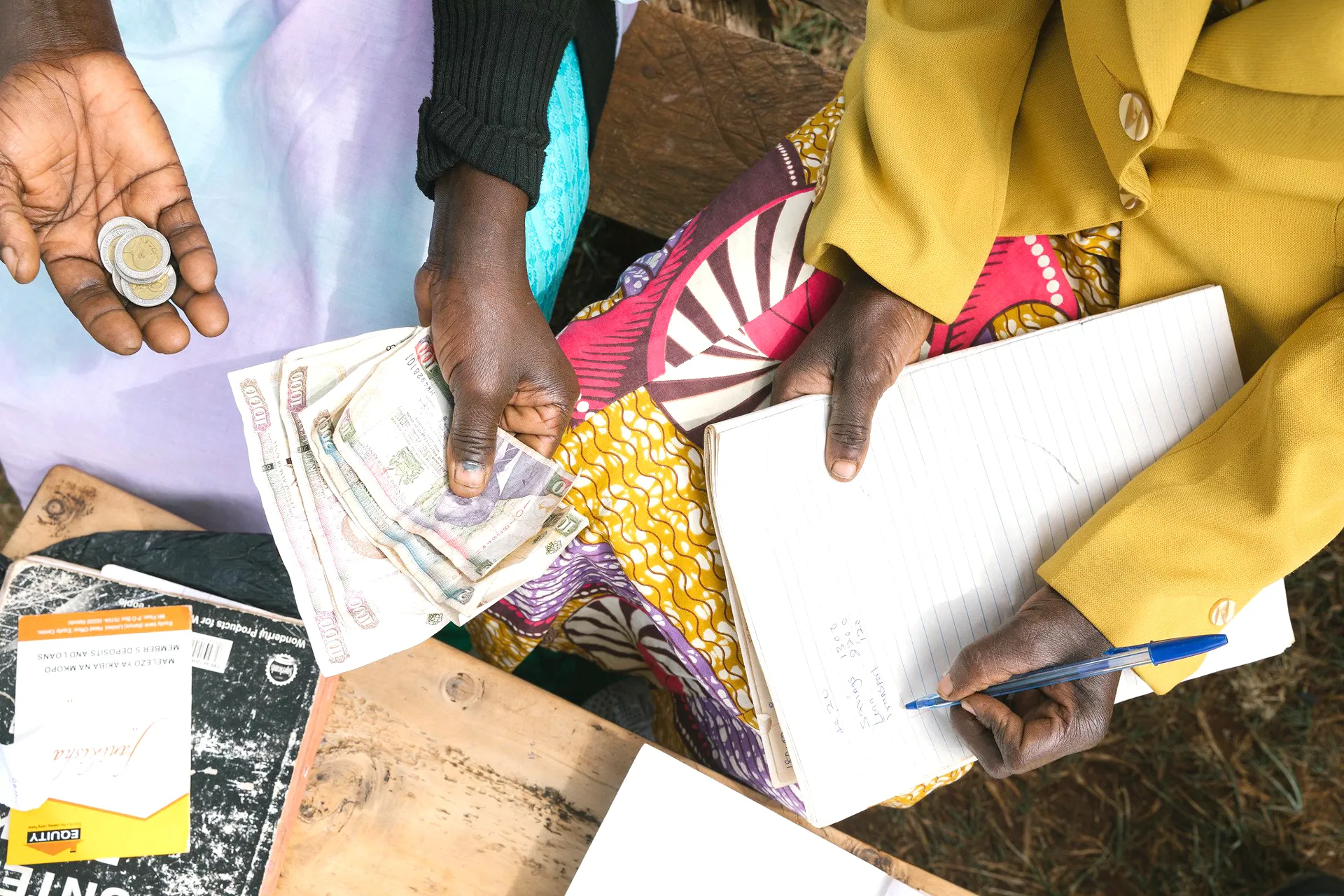5 ways affordable financing for safe water helps break the cycle of poverty
How small loans help families in need get lasting access to safe water at home and break the cycle of poverty
By Dr. Rich Thorsten, Chief Insights Officer
Published February 21, 2023
If you had to walk for hours each day risking your health and safety to find water or, if you had to spend a large portion of your income to buy it, would you make the sacrifices to keep your family alive? Paying the price to keep your family alive is a choice we can all understand. What’s not comprehensible, and yet a reality, is the number of people who have no choice but to do it.
The coping costs of the global water crisis are high for families in poverty. Because they lack the funds to pay in full for a long-term, safe water solution at home, they ‘cope’ by spending large portions of what money they do have on temporary fixes. These coping costs help keep many of the 771 million people around the world without access to safe water at home trapped in a cycle of poverty.
In the developing countries where we work, like India and Mexico, local governments are often aware of their water crises. In order to help serve their populations, they may make water available (often delivered by truck from water vendors) or subsidize the cost of this water, however it is not often adequate to serve a household’s weekly water needs. Many people have no choice but to pay up to twenty percent of their income to buy water. And, if they aren’t able to pay the price for it, millions of women and children spend countless hours each day collecting water from sources like ponds or rivers or waiting in long lines to buy water from kiosks. The water they collect and consume could cause illnesses that require medical treatment. The costs of the global water crisis curtail the ability of families to afford all of life’s important expenses thus, they remain trapped in a cycle of poverty.

The costs of temporary access to water keep millions of families around the world trapped in a cycle of poverty. Our smart solution helps change this.
Some may question financing as a smart solution to help families in need get long term access to water or toilets at home. My experience and research as Chief Insights Officer lead me to think differently. Through our work, we’ve found that for millions of people, financing for water or sanitation makes sense. Small, affordable loans offer families the ability to purchase long-term safe water and sanitation solutions that solve their immediate need and, over time, cost less than continuing to pay in time and/or money for temporary fixes. And the savings don’t stop once a loan is repaid. After families in poverty get lasting access to safe water and improved sanitation at home, their financial circumstances can improve.
As a result of our work to increase affordable access to safe water and improved sanitation through small loans, we’ve found there are five unique ways this approach helps improve household finances.

Women and children will spend a collective 200 million hours collecting water today. Day after day, their time and activities are controlled by this task. Access to safe water and sanitation at home can help women and families shift time spent collecting water or looking for a private place to relieve themselves into time to earn money. Specifically, we’ve found that 35-55% of time gains from improved water and sanitation are typically spent on income-generating opportunities that help people break the cycle of poverty. People like Margaret.
Margaret sews, but she didn’t always have time to make dresses to sell. There was a time when many hours of her days were consumed by water collection. From her home to a local pond, and back again, Margaret made multiple trips of two kilometers each day to collect water for her family’s bathing, cooking, and cleaning needs. Margaret explained to us how her life has changed because she now has a lasting safe water source at home, “With these dresses, I earn income too now…not just my husband.”

When a family finances a safe water or sanitation solution for their home, they often experience cost savings as they no longer incur expenses associated with expensive temporary solutions like the water delivery services I discussed earlier.
Take Leneriza’s case. She financed a long-term, safe water solution that saved her family more than $50 a month. When you live on less than $3.20 a day, that’s life changing. Prior to getting a loan for a water connection and tap in her home, Leneriza purchased water from a vendor for about $60 a month. This amount was more than 20% of her household’s monthly income. With the loan, she connected her home to the local water utility. Now Leneriza pays about $4.50 a month to have water in her home.

Access to safe water and improved sanitation at home also stimulates indirect cost savings. For example, when families have safe water and improved sanitation at home, they no longer pay medical expenses related to illnesses derived from consuming unsafe water. People are also able to be more productive and can work when they aren’t sick. The bottom line – universal access to safe water and improved sanitation is estimated to result in more than $342 billion of economic value annually because of health-related indirect cost savings.

The people we serve know the hardships of the water crisis because they’ve lived through them. This is why some of them extend the benefits of their financed safe water solutions to their neighbors. They do this by selling water to nearby households at an affordable rate. The earnings can help them repay their small loans and increase their household income.
For example, in Tanzania Bakari financed a water storage tank, filter, and pipes. Now Bakari’s family has enough water for their needs and enough to sell to their neighbors for a fraction of what local vendors charge. Money earned from the sale of water has helped Bakari repay his small loan. Around the world, in the communities we serve, we’ve repeatedly found that direct forms of income generation center on the sale of water.

As families get affordable, long-term access to safe water at home and their water needs are finally met, we’ve found they also use the water in their homes for the purposes of generating income.
When we met with Nimfa in the Philippines, she explained just how much access to safe water at home has changed her income earning potential, “I am happy. I never thought I could run a hair salon in my home. And water...water made this possible. As a young girl, I didn’t have water at home. I walked to find it for my mother. We used pond water, sometimes we bought the water…but it was expensive to buy.” We’ve reached more than 52 million people in need of safe water or sanitation. We have seen several examples of how women like Nimfa have also found ways to earn income through small, home-based businesses that require water.
Millions of people living in poverty every day pay for not having access to safe water and sanitation. They pay through their time, their wallets, their health, and their ability to earn a living. Evidence from our research and those of development experts shows that when people are empowered to finance their own water and sanitation solutions, they can break that cycle of poverty. I’ve dedicated my career to help increase access to financing for water and sanitation to those who need it most. Join us. Together we can help bring safe water and sanitation to all.
